Our Blog
Blog All Items Title
All Recent Articles
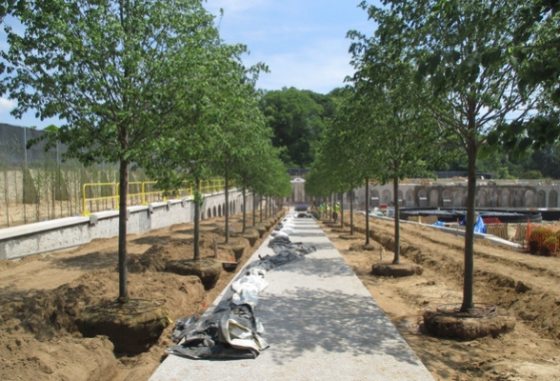
Super Soil: Designing Soil for the Main Fountain Garden
“Great soil is the foundation for a great landscape,” explains Claire Agre. A landscape architect, Agre is also a principal at West 8 urban design and landscape architecture, a design firm responsible for the execution of parks, gardens, waterfronts, and public spaces around the world. West 8’s latest project is to lead the landscape design of the Main Fountain Garden, including the planting of more than 2,600 boxwood in an exuberant hedge, 168 linden trees in Allee formation, and the development of additional pathways, furnishings, and fixtures for guests to enjoy. Great care was taken in all aspects of planning the Garden, from plant selection to bench design, but perhaps the most intensive aspect of the project was designing the soil upon which the Garden would thrive. But how does one design soil?
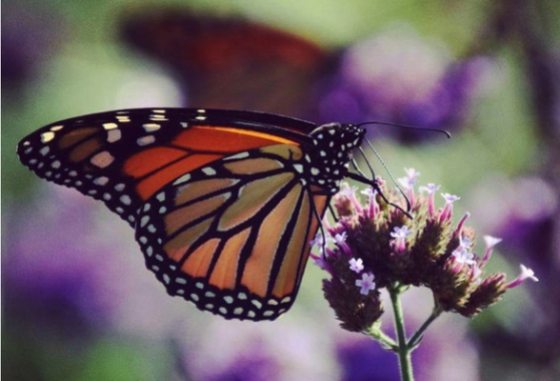
Save the Majestic Monarch
The Meadow Garden at Longwood is a beautiful space that helps to inform visitors about native and naturally producing flora throughout the seasons. The Meadow Garden also illustrates how native plants can be used in our own gardens both for aesthetic benefit and wildlife habitat. Each habitat in the meadow demonstrates the complex interrelationships of plants, insects, birds, amphibians, and many other small animals. Sadly, in recent years the beloved monarch butterfly (Danaus plexippus) has been in decline due to habitat destruction. The good news is we can work to reverse this trend in our own gardens.

Introducing Canna ‘Longwood Simply Salmon’!
Our plant family is welcoming a new addition this summer: Canna ‘Longwood Simply Salmon’! This canna was bred here at Longwood and is being released commercially under the Longwood Gardens name. Canna is a genus of large tropical and sub-tropical rhizomatous perennial plants with showy flowers and foliage. Canna ‘Longwood Simply Salmon’ is a compact, virus-free cultivar with showy, salmon-colored flowers. Cannas have a strong presence at Longwood, as a favorite feature in our summer display. They also have a long history within our Research division.

Native Orchid Conservation at Longwood Gardens
When you think of endangered species and conservation programs, you may think of our nation's zoos and aquariums and their work with wildlife preservation. Native flora may not come immediately to mind, but in Pennsylvania alone, the US Department of Agriculture lists almost 300 plants as endangered or threatened. Pennsylvania is home to nearly 60 species of native orchids. Some are among the showiest and most charismatic members of our native flora, but most are rare and threatened in the wild. Climate change, invasive species, habitat loss, and a booming white-tailed deer population have decimated many orchid populations in Southeastern Pennsylvania and across the region. To combat these issues, and to provide critical information about the propagation and growth of native orchids in cultivation, our Research Team at Longwood Gardens is developing a conservation program.

Making Our Blooms Count
Phenology is the scientific study of nature’s seasonal events—when cherry trees bloom and when birds choose to nest, for example. Studying phenology is a great way of getting outside and observing nature. Longwood Gardens has been observing and collecting the phenological data of when plants boom in our Gardens for many years. The data collected helps predict when plants will bloom each year, when to collect pollen for breeding programs, when to photograph flowers, or to let guests know the best time to visit to see a specific bloom. We are lucky to have a team of 15 trained observers who are dedicated to this important task.
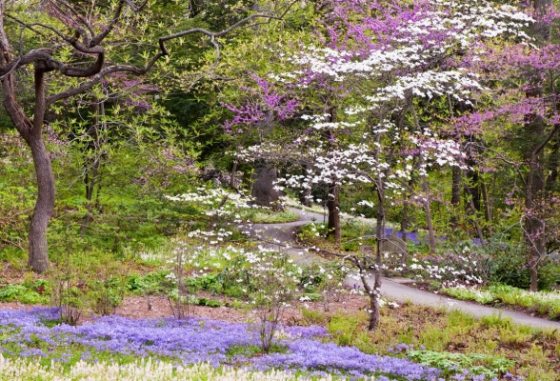
Peirce’s Woods in Bloom
I love this time of year in Peirce’s Woods, even though it feels like a non-stop race to pull all the weeds before they go to seed. The beauty of the woods in bloom makes me forget all that. Suddenly all the flowers in Peirce’s Woods have opened all at once. Peirce’s Woods is an art form garden, composed with native plants. The central design theme is large horizontal sweeps of groundcovers balancing the strong vertical lines of the mature tree trunks. Most of our native woodland flowers take advantage of the brief period in early spring before the trees fully leaf out to grow, flower and set seed. The two main groundcovers currently stealing the show are sweeps of white foamflowers (Tiarella) and ‘Sherwood Purple’ creeping phlox (Phlox stolonifera).

What Lies Beneath: A Deeper Look into an Engineering Marvel
Built in 1931 by Pierre S. du Pont, the Main Fountain Garden was inspired by Pierre’s passion for engineering and design, and his travels to European gardens. After years of deteriorating stonework, many fountain features were turned off—leading to limited access to the Garden since the early ‘90s. In order to save this treasure, we embarked on a major restoration project. This spring will mark the halfway point of the two-year revitalization. In this post, we will go below the surface of the Main Fountain Garden and explore some of the engineering behind the beauty.
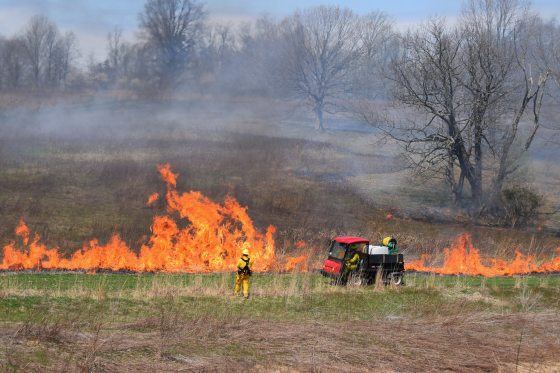
Fire in the Meadow: A Beneficial Burn
This spring we have been feeling the heat in the Meadow Garden! This 86-acre space at Longwood combines horticulture and ecology to create an environmentally sensitive landscape. Although this area of rich biodiversity may seem wild and maintenance free, meadows actually require regular attention. A typical meadow like the one here at Longwood requires regular scouting for invasive plants, the removal of woody plants, and a yearly mowing or burning. Historically, meadows in the eastern U.S. burned naturally as a result of lightning storms, or by Native Americans, who used fire to maintain plant communities and manage game animal populations. At Longwood, we have been practicing prescribed burns since the mid-1980s, with specific areas being burned on a rotational basis. This year a prescribed burn of our Meadow Garden was carried out on April 6.

Horticulture in Any Language
Longwood Gardens is known not only for its leadership in horticulture, but also for its excellence in education—both at home and abroad. Among its many outstanding programs is Longwood’s International Training Program, which was founded in 1956 with Aage Anderson of Denmark as its first participant. This year there are international trainees and interns from Poland, Spain, South Korea and the UK. The program allows each individual to focus on key areas of interest and to broaden their learning experience by rotating through different areas of the Gardens, including outdoor display, indoor display, natural lands, production, education, marketing, plant records, and research. Participants live with American interns, Professional Gardener (PG) students, and Great Gardens of the World TRIAD fellows on Red Lion Row, which is just a short walk from the Gardens. “The Row” was originally built by Longwood’s founder, Pierre S. du Pont, to house employees and their families. Nowadays 20 to 40 students live on “The Row” at one time, which leads to a unique and highly sociable international community, sometimes known as plant camp!
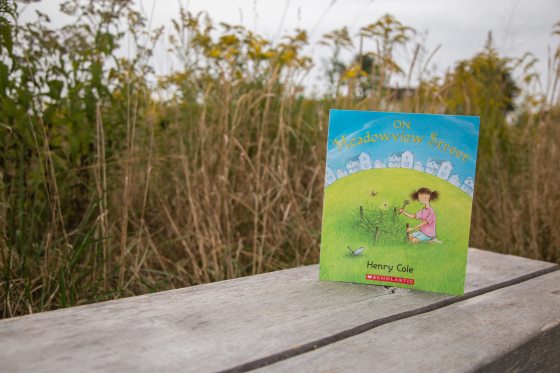
On Meadowview Street: A Family Community Read
What if you visited Longwood Gardens and it didn’t have any gardens? What if you moved to Meadowview Street and it didn’t have any meadows? That very question got author/illustrator Henry Cole thinking. And so he created the story of a young girl named Caroline, who grows her own meadow in our 2016 Family Community Read selection, On Meadowview Street. “Isn’t it ironic to see street signs everywhere with names like ‘Cardinal Way’ or ‘Fern Street’—and there are no cardinals or ferns anywhere near!” says Cole in a recent email interview with Longwood. “Places are called things to make them sound inviting and beautiful but it is seldom that communities are planned (and planted) with the environment first and foremost.”
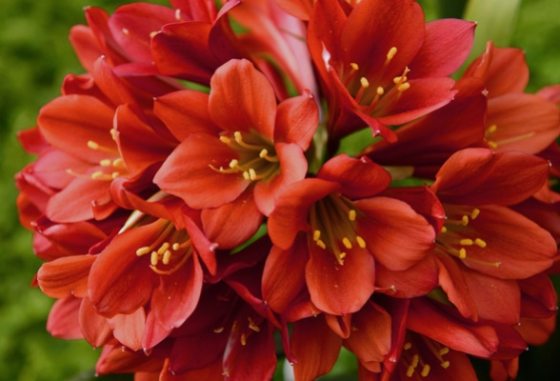
Introducing Clivia miniata ‘Longwood Chimes’
We are pleased to announce the release of Clivia miniata ‘Longwood Chimes’. This is the fourth named clivia introduction from our breeding program, which was started by Dr. Robert Armstrong in 1976. The flowers of ‘Longwood Chimes’ are a complex blend of bronze and burnt oranges with dark red overtones and a green throat. The red flush of the flowers, framed by leaves of dark olive green, deepens to dark red as the flowers age. ‘Longwood Chimes’ catches the eye of the clivia connoisseur and the novice alike. ‘Longwood Chimes’ will be on display on the fern floor in Exhibition Hall at the North American Cliva Show at Longwood on March 12–13, 2016. Because it is a plant that is slow to multiply, a limited number exist. This year Longwood Gardens will be offering a single plant of Clivia miniata ‘Longwood Chimes’ for auction on eBay. Bids will be accepted March 11–21, 2016.
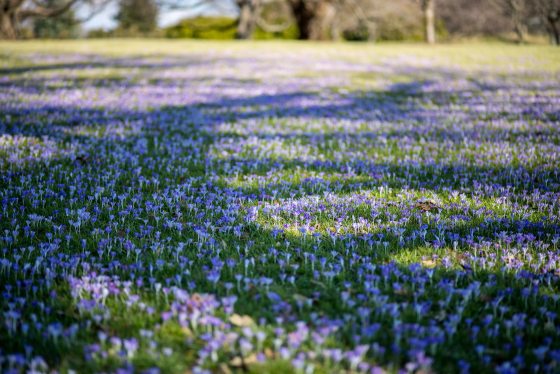
500,000 More Reasons to Love Spring
As February transitions into March, those of us in Southeastern Pennsylvania are looking everywhere for signs of spring. This year, the grounds of Longwood Gardens are providing a half million new reminders that spring is just around the corner. Last fall, our gardeners, students, and volunteers completed a massive effort to add 500,000 early spring bulbs to the landscape, and these bulbs are beginning to bloom now!
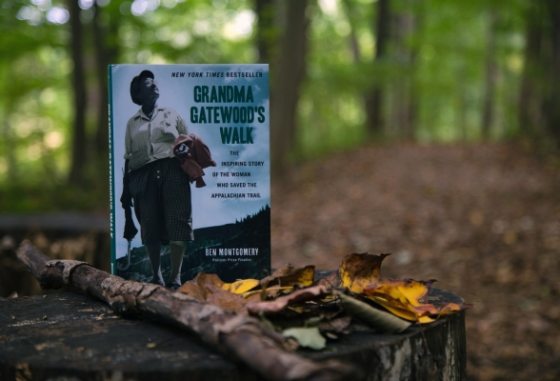
Grandma Gatewood’s Walk: A Community Read
One person. One step. That is how some of the most wondrous journeys—and stories—begin. The inspirational power of one is the theme of Longwood’s third annual Community Read, an event that moves us to pick up our feet as we journey along with this year’s book—Grandma Gatewood’s Walk: The Inspiring Story of the Woman Who Saved the Appalachian Trail—by Pulitzer Prize finalist Ben Montgomery.
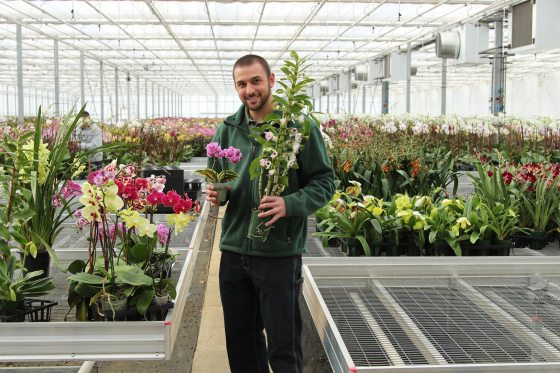
A Year in the Life of our Orchid Grower
My first year as the Orchid Grower at Longwood Gardens has been quite an adventurous one. This is a large collection to take on, and with its age and tradition, a very serious collection at that. Because of my background in retail orchid growing and the wholesale production of orchids, I was able to identify ways in which I wanted to restructure the culture and methods we use to manage the collection rather quickly.We have very big plans for the collection and its future growth. We are pursuing unusual and uncommon plants of high quality with tremendous aesthetic impact.
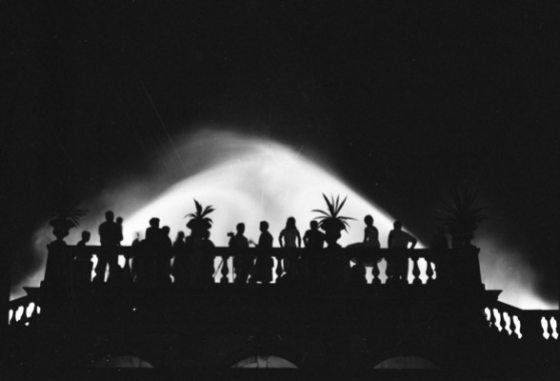
Picturing the Past: A Gift from Eugene L. DiOrio
The Longwood Gardens Library & Archives recently received a generous gift from longtime guest, local historian, and avid travel photographer, Eugene L. DiOrio. Since May 2013, Mr. DiOrio has presented 1,073 black-and-white negatives, 11,652 color slides, and approximately 3 boxes of brochures, pamphlets, and maps to Longwood. The collection covers Gene’s local, regional, and European travels, with a focus on historic architecture, estates, and gardens; it will comprise approximately 40,000 black-and-white negatives and 40,000 color slides when complete.
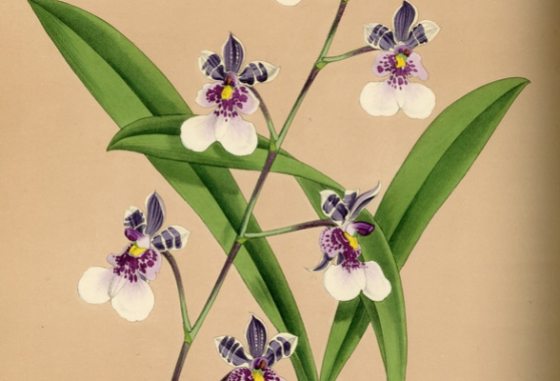
Pursuing a Passion for Orchids
When Pierre and Alice du Pont were married in October 1915, the Longwood estate already boasted beautiful outdoor flower gardens, the Open Air Theatre, and a brand new addition to the Peirce-du Pont House—a conservatory. Their passion for gardens was evident. Features that we associate with Longwood today, like dahlias, roses, topiaries, fountains, champion trees, and brilliant spring bulbs were already notable; however, there were no orchids.
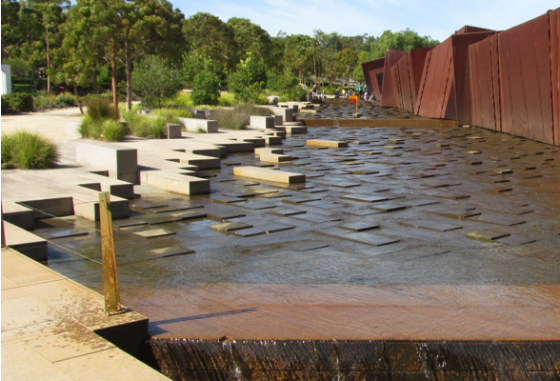
Graduate Fellows’ Australian Travelogue
The Longwood Graduate Program Fellows have nearly finished our time in Australia. We visited eleven different sites including botanic gardens, a national park, and a zoo. Each location has filled a different niche and given us a unique experience. Our goal for this trip was to learn how Australian gardens are evaluating the success and social impact of their site and programs. As an element of that goal we have also been investigating community engagement strategies. Evaluating social impact is a challenging task, in fact simply agreeing on definitions can be a challenge. Assessing social impact, or return on mission, is something we are currently working on as part of the next 5-year strategic plan here at Longwood Gardens.
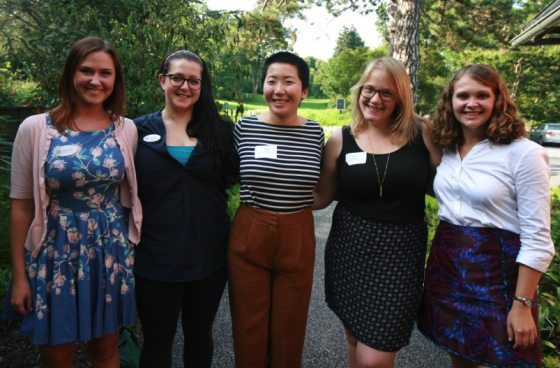
Aussie Adventures With The Longwood Graduate Program
As Pennsylvania finally seems to be settling into winter weather, the First Year Longwood Graduate Fellows are excited to be setting off for the southern hemisphere. Since July, we have been researching and developing an itinerary to explore the social impact of Australian gardens in Sydney, Melbourne, and Adelaide. This trip was designed to align with Longwood Gardens’ strategic planning goals to measure the effect of education and community engagement programs beyond the garden gates.
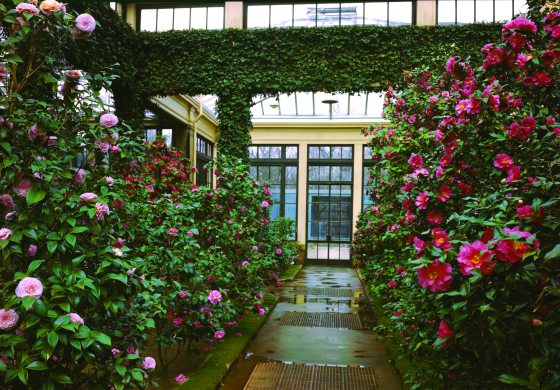
A Quest for Hardiness
Tracing the legacy of camellias at Longwood, from Pierre S. du Pont’s passion to core collection.
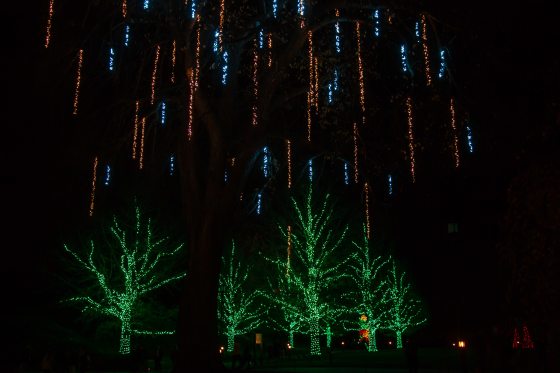
The Spirit of A Longwood Christmas
A little boy dashes from the Visitor Center into the brightly quiet wonder of A Longwood Christmas. His eyes, wide as the night, reflect the glow of the big old elm, tall as the sky and brilliant with light, perhaps borrowed from the stars above. “How do they do all of this?” he exclaims. A December breeze catches the branches and makes the lights twinkle even more brightly. Or could it be the spirit of Christmas at Longwood—the unseen essence that animates the place and its people?
